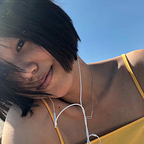Arts and Revolutions (blog #2)
What is the relationship between art and revolutions?
In the dystopian classic Brave New World, the practice of Sciences and Arts are illegal because they are threats to the regime in power. Puzzled I was, how can arts, an expression or an imagery, potentially destabilize existing social dispositions?
This week, going through the archive Creative Memory of the Syrian Revolution, I began to grasp the role of art in revolutions, how indispensable art is during revolutions. If revolutions are, in essence, the pursuit of alternative realities, art provides a medium and captures the possibility of that imagination. To do art in revolutions is to give texture to an imagined reality. Anti-revolutionary authorities go to great lengths to suppress artistic expression in chaotic times, even resorting to symbolism. Ibrahim Qashoush, the author of the Syrian protest anthem, “Yalla Erhal Ya Bashar,” (Get Out, Bashar) was found dead with his vocal cords cut out. But that did not stop the spirited crowds from chanting. Ali Ferzat, a prominent political cartoonist, had his hands targeted and broken by security forces, but that did not stop him from drawing. For the anti-revolutionists, it is a lost battle from the beginning, because ideas are bulletproof.
Art carries the trace of one being’s marginal existence to another, despite the grimmest circumstances. In Auschwitz, photographs were smuggled out as proof of the gruesome, unimaginable reality of the prisoners. Through the unfocused photo (taken in a hurry) we see piles of bodies lit up. There was smoke.
For those of us at the receiving end of the picture, we bear responsibility to its witness. For if this was indeed humanity’s doing, how can we remain nonchalant to contemporary acts of dehumanization? Palestine. Afghanistan. Uyghurs. Myanmar. Yemen. Hong Kong. Under the masking of self-important terms, Human Rights, Sovereignty and Self-Defense, crimes are committed and justified. It is a somber déjà vu to the times we use nation-building, civilizing projects and racial purity to annihilate a whole demography. When will humanity wake up from this recurring nightmare?
Art conveys hope too. Poetry and prose create refuge for bodiless peoples in which the comfort of familiarity and a homeland is found. I have been reading The Butterfly’s Burden by Palestinian national poet Mahmoud Darwish lately. Strong, united metaphors characterize his collection. He so often uses feminine symbols for Palestine not only for ideas of motherland, but with what is happening it is almost like she is raped, time and time again…
My favorite one from the collection is The Stranger Stumbles upon Himself in the Stranger. I do not know how the poet intended the poem to be read, but for me it conveys the image of two disembodied Palestinians seeing oneself in another, through metaphors of a lover. Nothing has to be said when a fugitive stumbles upon another; all is understood. Art is both the instrument and the expression of our imagination. It encapsulates the possibility of an alternative reality, one that is close to our hearts.
